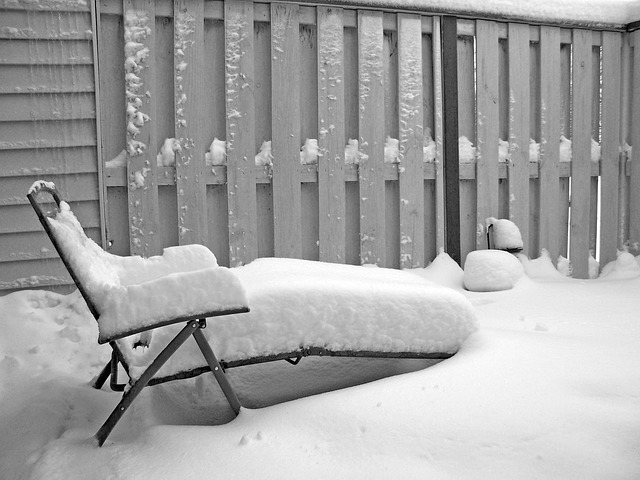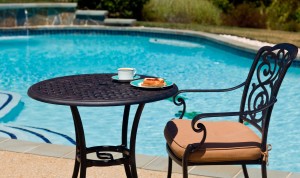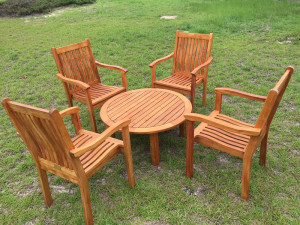
As sad as it is to move indoors after enjoying your outdoor furniture all summer, taking a little extra time to care for your patio set now will keep everything pristine for spring’s return. While most patio and lawn products are manufactured to remain outside for the winter, some precautions may still be required for harsher weather conditions. Here’s a general breakdown of how to treat the common materials that show up on your patio, porch or deck. For more specific guidelines, check with your furniture’s manufacturer.
Metals
 Most aluminum furniture has been powder coated, keeping it from rusting. Zac Bryant, the Vice President of Product Development and Merchandising at Lane Venture, a manufacturer of outdoor furniture, suggests washing aluminum and then applying a coat of automotive wax for extra protection. Touch up any scratches with car paint in the appropriate color.
Most aluminum furniture has been powder coated, keeping it from rusting. Zac Bryant, the Vice President of Product Development and Merchandising at Lane Venture, a manufacturer of outdoor furniture, suggests washing aluminum and then applying a coat of automotive wax for extra protection. Touch up any scratches with car paint in the appropriate color.
Despite wrought iron furniture’s sturdy structure, it is susceptible to rust. Remove any that’s accumulated with a wire brush and then coat with an exterior spray paint designed for wrought iron, before covering with a quality tarp until spring.
Plastic
Plastic needs little care – a blast with the hose and a good toweling off – but because of its potential brittleness, it also needs to come indoors for the winter.
Fabrics
Designed to deter mildew, acrylic fabrics can still harbor mold if the fabric remains dirty. To avoid black spots, vacuum or shake off your cushions and umbrella at the end of the outdoor season, and keep anything stuffed with foam in a dry space for the winter. For tough stains, use a bleach/detergent mix (one cup bleach to a gallon water, with a squirt of detergent), but don’t use bleach on any cotton or printed fabrics. For those, just use soap and water.
Natural materials
 Teak is the most durable of woods used to make patio furniture, turning an elegant silver with time and exposure to the elements. If you want teak to maintain its original color, apply specialty oil at least once a year. Other painted woods will lose their color in the sun; replenish a faded coat with an acrylic paint recommended by a quality paint supplier.
Teak is the most durable of woods used to make patio furniture, turning an elegant silver with time and exposure to the elements. If you want teak to maintain its original color, apply specialty oil at least once a year. Other painted woods will lose their color in the sun; replenish a faded coat with an acrylic paint recommended by a quality paint supplier.
Synthetic wicker can stay outdoors year-round, but natural rattan needs to be kept in a dry, dark space. Before storing, check the wicker for damage and repaint any areas that are flaking.
Finally, always store any patio furniture that features mosaic tops – a good freeze in January will dislodge all those tiles.
Thanks to Bob Vila for this great article




Recent Comments